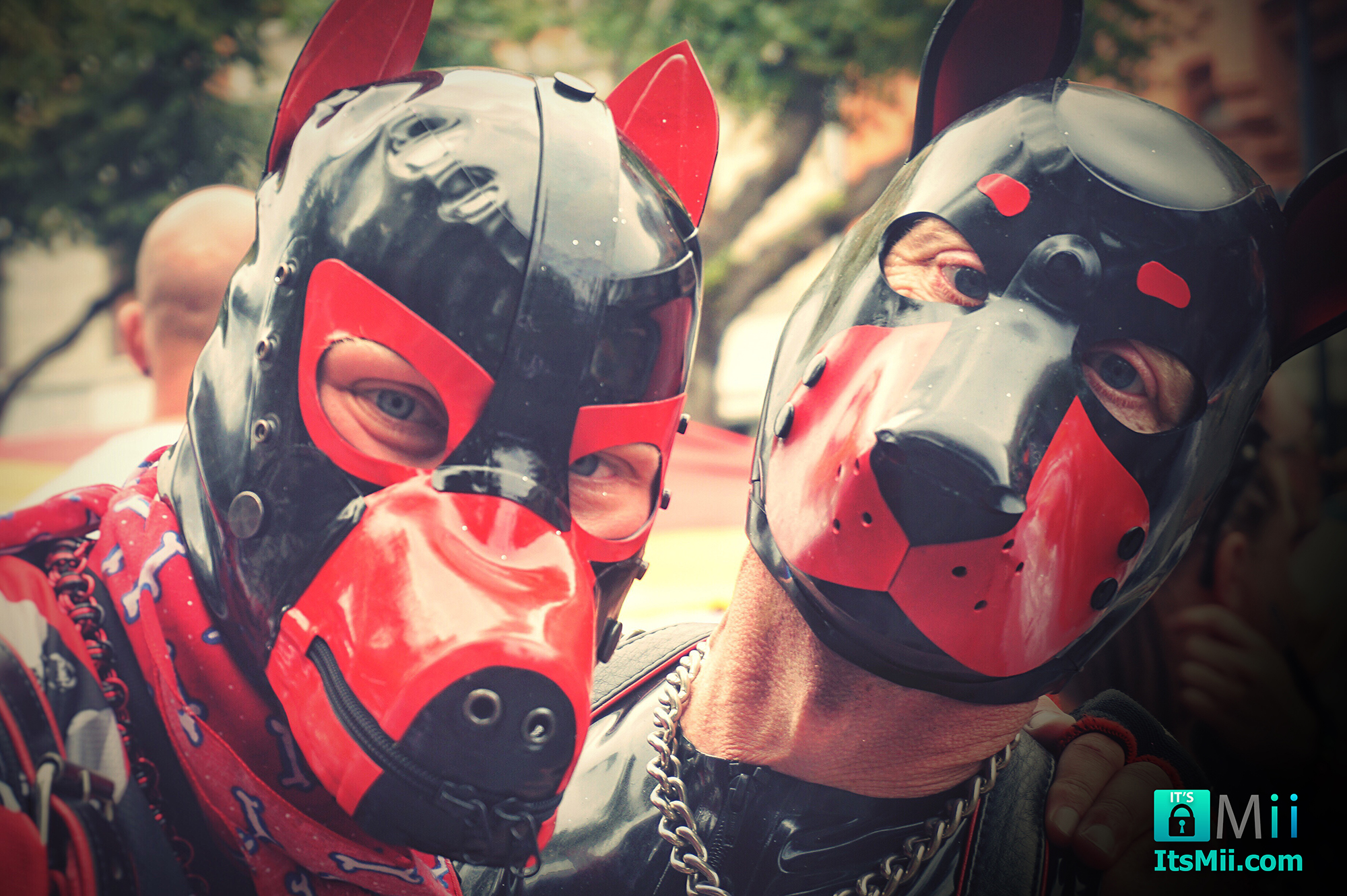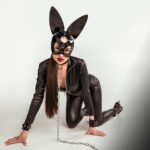Within the vast and varied world of kinks and fetishes, few items are as visually striking—or as commonly misunderstood—as the pup hood. With its floppy ears, snout-like muzzle, and canine-inspired design, the hood often catches attention for its playful, almost cartoonish appearance. But beneath that surface is a deeper and more nuanced story. For many, the pup hood is far more than just a costume—it’s a gateway into a psychological space that allows for freedom, expression, vulnerability, and connection. It symbolizes a shift from the pressures of daily life into a realm where instinct and emotion can take the lead, often through the lens of submission, trust, or affection.
What makes the pup hood fetish particularly compelling for its practitioners is how it blends roleplay with emotional intimacy and identity. Some people are drawn to the power dynamics involved—where one partner plays the obedient, playful pup, and the other takes on a handler or dominant role. Others find solace in the simplicity of the pup mindset, using it as a form of stress relief or emotional release. The hood itself becomes a tool for transformation, allowing individuals to express sides of themselves they might otherwise keep hidden. Whether used in private, sexual contexts or as part of larger pup communities and social events, the hood can represent belonging, purpose, and pride.
To understand the appeal of the pup hood fetish, it helps to approach it without judgment or assumptions—and instead, with curiosity. Like many expressions of kink, it’s not about one-size-fits-all definitions. For some, it’s a playful escape; for others, a meaningful identity; for many, a bit of both. The hood is simply the entry point, a symbol of something much richer happening beneath the surface. At its core, this fetish—like all consensual kink—offers people the chance to explore themselves and their relationships in honest, creative, and affirming ways.
What Is a Pup Hood?
A pup hood is a specialized mask or hood, typically crafted from materials like leather, neoprene, or rubber, and designed to resemble a dog’s head—complete with ears, snout, and sometimes even a muzzle or eye holes. This distinctive accessory is central to puppy play, a kink that falls within the broader category of pet play, where individuals take on the roles and behaviors of animals. In this context, the pup hood helps signal a shift in identity, marking the wearer as a playful, obedient, or affectionate “pup” within the scene. It’s not just about aesthetics—the design enhances the roleplay by giving physical form to the persona the wearer is stepping into.
But a pup hood is far more than just a costume or visual prop. For many who engage in pup play, putting on the hood initiates a powerful psychological transformation. It becomes a symbolic act—one that allows the wearer to shed the expectations and stressors of daily life and enter a more instinctive, uninhibited state of being. The hood creates a boundary between the person and the outside world, helping them access emotions or behaviors they might otherwise suppress. Whether it’s about playfulness, submission, freedom, or emotional release, the act of donning the pup hood often serves as a ritual—a moment of crossing over into a space where vulnerability, expression, and connection can flourish.
What Is Puppy Play?
Puppy play (or pup play) involves one person taking on the role of a pup, while another plays a Puppy play, often referred to as pup play, is a type of roleplay where one person adopts the persona of a pup, while another takes on the role of a handler, trainer, or owner. The person playing the pup may engage in behaviors like crawling on all fours, barking, wagging their “tail,” or playing with chew toys and balls—interactions that mimic the playful energy and responsiveness of a real dog. While these activities may seem performative on the surface, they often carry deep symbolic meaning. For many participants, these behaviors are ways of expressing trust, affection, and playful submission in a context that feels both structured and freeing.

The appeal of pup play goes far beyond obedience or power dynamics. A central draw for many is the ability to disconnect from everyday pressures and step into a headspace that is instinctual, childlike, and free of social performance. When someone embraces their pup role, they’re often letting go of ego, anxiety, and the need to “adult.” This creates a unique emotional landscape where affection can be shown through nuzzling, mischief can be acted out without consequences, and care can be received without shame. It’s a space where trust and connection flourish, because participants are engaging from a place that feels emotionally honest and stripped of pretension.
While pup play can have a sexual component, it is by no means limited to erotic expression. For many, the experience is more emotional, psychological, or even therapeutic than it is arousing. Pup play can provide a profound release from the rigid expectations of daily life, allowing people to reconnect with joy, silliness, vulnerability, or comfort in a deeply embodied way. Some participants even describe it as a form of emotional healing or self-soothing—offering an escape from stress, trauma, or internalized pressure by stepping into a simpler, more nurturing dynamic. Whether sexual, playful, or restorative, pup play creates a container for people to explore identity, connection, and care in ways that feel meaningful and real.
So why the hood?
Wearing a pup hood creates a powerful sense of transformation—both physically and psychologically. By covering the human face and replacing it with the exaggerated features of a canine, the hood helps blur the lines between personhood and persona. This visual and sensory shift allows wearers to mentally “drop in” to a different headspace—one where they can let go of social performance, language, and everyday roles. For many, this anonymity is liberating. It creates a psychological buffer that makes it easier to explore parts of themselves—such as vulnerability, obedience, or playfulness—that might feel too exposed or risky without the hood.
Beyond the personal shift it creates, the pup hood also plays a key role in many Dominant/submissive (D/s) dynamics. For submissive-leaning pups, wearing the hood can deepen their sense of surrender, making commands feel more immersive and interactions more primal. For Dominants or handlers, the hood acts as a visual marker of control, reinforcing the dynamic in a tactile and symbolic way. But not all pup play is about power exchange. For many people, the hood isn’t about being dominated at all—it’s about having fun, connecting with others, and accessing a form of joy that feels uninhibited and nonverbal.
In addition to its psychological and erotic significance, the pup hood often affirms a person’s role within a broader pup community. Like uniforms or insignia in other subcultures, the hood can signify belonging, identity, and chosen roles—whether someone identifies as an alpha, beta, stray, or playful pup. Names, colors, packs, and symbols all play a role in how people connect and find their place within the scene. For many, wearing a pup hood isn’t just about an isolated experience—it’s a shared language, a cultural signal, and a way of expressing pride in who they are, both in and out of kink spaces.
Is It Just a Fetish?
role-playPup hoods are often associated with kink and fetish scenes, but not everyone who wears one does so purely for sexual reasons. Just like cosplay, drag, or even sports uniforms, putting on a pup hood can be a powerful form of self-expression—one that allows people to access and embody parts of themselves they might not feel safe revealing in everyday life. The transformation can feel liberating, offering an escape from societal expectations and a way to step into a more instinctive, unfiltered version of themselves. For some, the hood becomes a symbol of identity rather than a strictly erotic accessory—a tool for exploring emotion, freedom, and authenticity through role-play.
The motivations behind pup play exist on a wide spectrum, and how individuals engage with it can vary significantly. For some pups, the experience is deeply tied to their sexual identity, arousing and affirming their desires in a visceral way. For others, it’s more about emotional comfort—a form of stress relief, relaxation, or even a kind of regression into a simpler, more playful mindset. The diversity in how pup hoods are used reflects the broader truth of kink and identity play: it’s not one-size-fits-all. What matters most is that it feels meaningful to the person wearing it, whether that’s about pleasure, power, vulnerability, or pure escapism.
Is This Safe, Consensual, and Normal?
Yes—as long as it’s consensual, informed, and respectful, pup play and hood wearing are just as valid as any other form of adult expression. Most practitioners follow core kink values like RACK (Risk-Aware Consensual Kink) or SSC (Safe, Sane, Consensual). This ensures that everyone involved understands the roles, limits, and expectations ahead of time.
As for “normal”? That’s a moving target. What matters more is whether it’s meaningful, fulfilling, and consensual for the people involved. Kink isn’t about fitting in—it’s about feeling free.
How to Talk to Your Partner About It
If you’re into pup hoods and want to share that with your partner, the key is to approach the conversation with vulnerability rather than just sexual urgency. Instead of presenting it as a kink you want fulfilled, frame it as something that holds personal meaning—emotionally, psychologically, or sexually. Talk about what the pup hood represents for you: is it about freedom from expectations, playful surrender, power exchange, or a way to connect on a different level? Help your partner see that it’s not just a fetish object, but a pathway into a headspace or identity that feels significant. From there, extend an open invitation to explore it together in a way that respects both of your comfort levels. That could mean trying on a hood, experimenting with light roleplay, or simply being curious and having conversations—no pressure, just connection.
If your partner is the one who brings it up first, the best response you can offer is openness and curiosity. Even if it feels unfamiliar or outside your personal interests, try to listen without judgment and ask questions that come from a place of genuine understanding. What does it mean to them? How does it make them feel? You don’t need to dive in or agree to everything, but making the effort to understand the “why” behind the kink can foster a level of trust and emotional intimacy that benefits your relationship far beyond the bedroom. Sometimes, just being willing to hear your partner out without shutting down their desires can be incredibly affirming—and it might even unlock new layers of connection for you both.
Behind the Hood
At first glance, a pup hood might seem like nothing more than a quirky, attention-grabbing piece of fetish gear—a novelty item reserved for fringe scenes or niche communities. But to those who wear them, these hoods often represent something far deeper than costume. The floppy ears and muzzle aren’t just aesthetic choices; they’re symbolic tools that help people slip into a different psychological state—one where everyday stresses, roles, and expectations melt away. Within this pup persona, individuals find permission to play, to explore power dynamics, to feel nurtured, or to offer service—all through a lens of nonverbal, instinct-driven interaction. The hood, in this context, becomes a gateway to freedom, not just a mask.
The appeal of the pup hood, and puppy play more broadly, lies in its ability to tap into something elemental and deeply human. Underneath the kink or costume is often a yearning for connection, acceptance, and the comfort of shedding societal constraints. For some, being a pup means expressing affection and loyalty in a pure, uninhibited way. For others, it’s about obedience, vulnerability, or playful rebellion. And for many, it’s about forging intimate bonds with handlers, partners, or packs—relationships built on trust, care, and shared understanding. These dynamics are not random or frivolous; they reflect real emotional needs, approached through a creative, consensual framework that celebrates authenticity.
In the larger world of kink and identity exploration, pup hoods serve as a powerful metaphor: they allow people to be fully seen by temporarily becoming someone—or something—else. It’s an intentional contradiction: wearing a hood to drop your guard. What may seem strange or even silly on the outside is, for many, a serious and affirming practice. Pup hoods help people reclaim joy, embrace submission or power, and, perhaps most importantly, step into a version of themselves that feels unburdened and real. Far from being just a novelty, the pup hood is a vessel for liberation—one that speaks to the universal desire to be free, connected, and accepted as we are.



